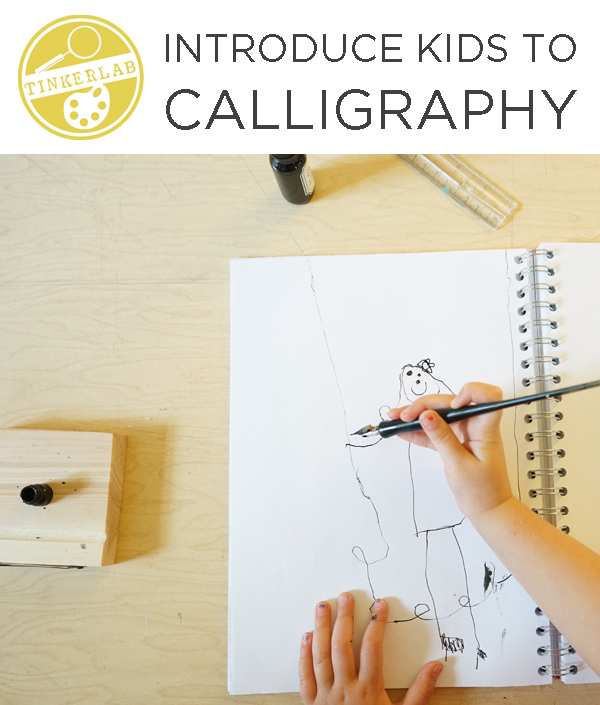
Introduce a child to calligraphy, and you’ll open him up to a world of penmanship, which is especially important in a time when cursive writing is being eliminated from public schools (Washington Post). Children will also learn to work with a dynamic and somewhat unforgiving drawing media and gain first-hand experience into the history of fancy writing.
cal-lig-ra-phy (noun)
fancy penmanship, especially highly decorative handwriting, as with a great many flourishes*
A Short History of Calligraphy
Calligraphy, or beautiful writing, has roots in more than one culture. Early examples of calligraphy can be found in China from more than 4000 years ago with characters inscribed into clay with metal tools. Other early examples are found in the Egyptian hieroglyphs, carved into clay tablets and dating back over 5000 years. From these early beginnings, we can now find early examples of calligraphy in Japanese, Arabic, and Medieval Illuminated Manuscripts. This nice, short video about writing in 15th century England is a fun trip back in time to the root of what we now call modern calligraphy.
Modern Calligraphy
As a counter-balance to our high-tech online lives, many of us yearn for a little slice of handmade and hand-drawn. If you have an eye on Pinterest or pay attention to fonts on today’s menus, catalogues, and other forms of graphic design, you’ve probably noticed that calligraphy is having a comeback. Modern calligraphers use pointed dip nibs to write in script, and these pointed, sharp nibs allow them to make the swirling flourishes and thin strokes that make this style popular today.
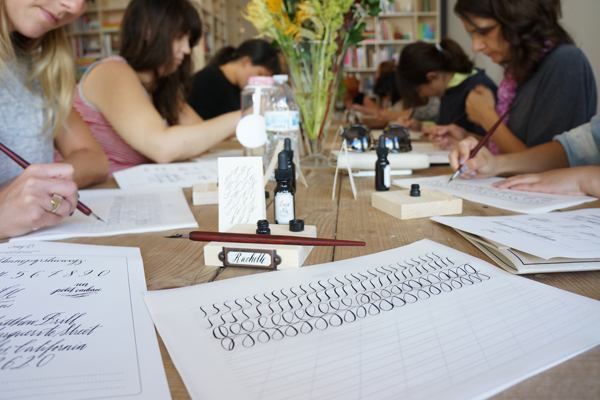
One of my favorite modern calligraphers is Maybelle Imasa-Stukuls and I had the great pleasure of taking a class with her at Makeshift Society in San Francisco (photos below). Quick tip: While Maybelle is based in the SF Bay Area, she travels around the world and you can see if she’ll be heading to your town here. I loved this class, and if you have any interest in calligraphy these popular (and often sold out) classes are well worth the effort.
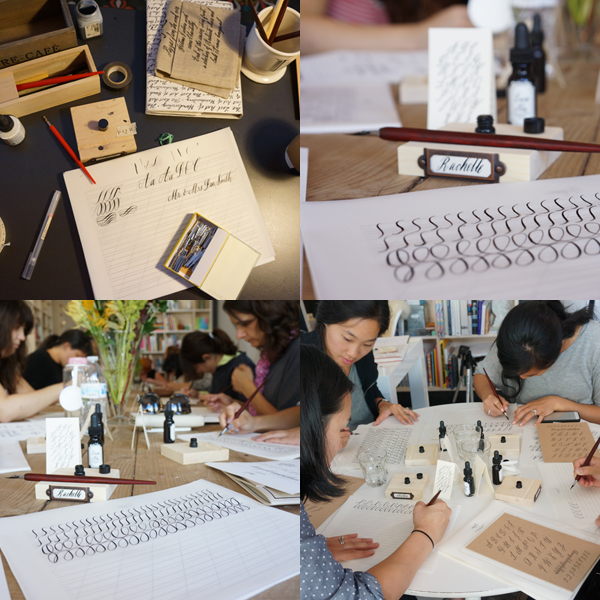
You don’t need a lot to get started!
For our class, Maybelle made each of her students a sweet wooden block to hold our calligraphy ink, and gave us a bottle of ink, calligraphy booklet, and a pen. Here are some similar supplies to get you started today…
Calligraphy Supplies
- Brause Calligraphy Nib Holder (wooden pen holders, similar to those used in our workshop). Another option is the Speedball Oblique Pen Holder
- Tachikawa G Series Nib (this pointed nib is what we worked with in our workshop). A similar option is the Brause Pen Nib
- Speedball Super Black India Dip Ink
- Calligraphy Paper or any paper that you’re comfortable drawing on. Use thin paper if you plan to place a guide beneath it.
- A calligraphy guide sheet like this to place beneath your paper to help achieve straight lines
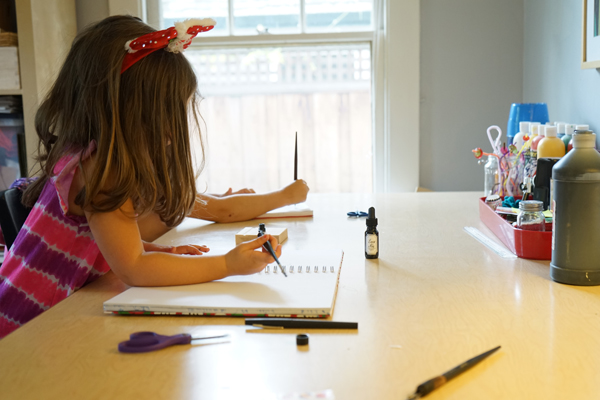
How to Introduce Kids to Calligraphy
Step 1: Clear the table
Step 2: Set up your supplies. Calligraphy pen, ink, paper
Step 3: Show your child examples of calligraphy. Ask, “how is this writing different from the writing that we use to make lists or write our names?” See reference books below for calligraphy resources.
Step 4: Practice drawing and writing. The object here is to have fun with the pen/s and not worry too much about how the writing actually turns out.
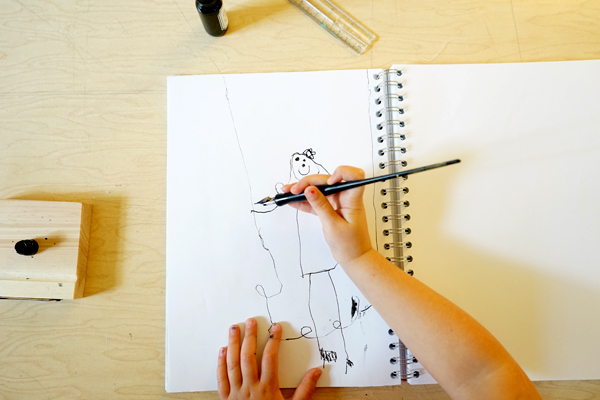
We drew right in our sketchbooks, which is nice a nice place to keep a running record of our drawings. The biggest challenge of using a calligraphy pen boiled down to how you hold the pen. I gently held the pen in my own hand to show my kids how to best twist the pen so that the nib was positioned properly on the paper. I didn’t worry too much about real calligraphy form.
The idea here isn’t to teach my kids how to write in perfect calligraphic form but to introduce them to a cool material. In the image above, my 3-year old used a drawing nib and shared with me that this was the most comfortable grip for her. She had a great time playing with the pen and drawing a picture (of me, on a swing, by the way!).
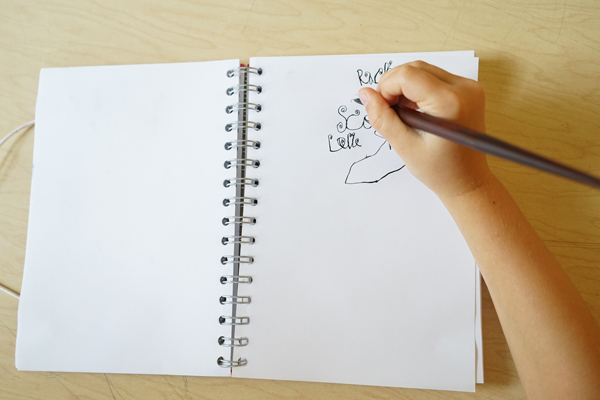
My 5-year old has been rocking flourishes for a while now, and used a pointed calligraphy nib for her lettering. She really enjoyed the challenge of adding swirls and spirals to her letters.
Calligraphy Books
These are all Amazon links for your convenience.
- Calligraphy for Kids, Eleanor Winters
- Modern Calligraphy: Everything You Need to Know to Get Started in Script Calligraphy, Molly Suber Thorpe
- Kids Book of Creative Letting, Lindsay Ostrom
- Letter Better: Doodling Guide Over 280 Patterns, Cyndi Hansen
- The Illuminated Alphabet, Theodore Menten
- Calligraphy Alphabet for Beginners, Mary Noble
* calligraphy definition: Dictionary.com

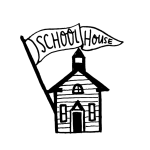
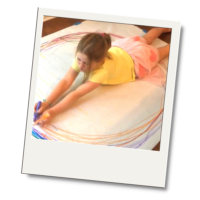
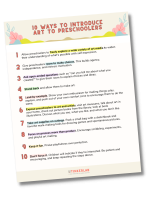
I love it! When I was a child, i loved calligraphy… just let me sit and start making some flourishes… Thanks for the inspiration.
Kisses!
I loved it too, Angaleta, and realized that a lot of kids must when my 5-year old got so excited about adding flourishes to everything in sight!!
Rachelle! Thank you for this great post! I loved your suggestions on how to introduce this to children. My kids are easily frustrated with the pointed pen (they are 4) so I had to back up and use pencils to teach them the strokes. Its so amazing how quickly they learn!
I would love to start a school calligraphy club but I am a novice. Would you have tips on materials needed and a possible schedule to follow? Or websites/videos to check out. I’m thinking maybe 2nd and 3rd graders.
thanks so much!